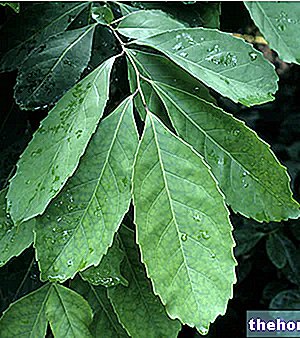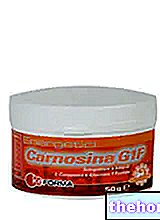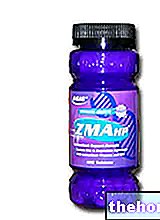What are
Cyclodextrins are a family of cyclic oligosaccharides, consisting of several glucopyranose units joined together through alpha 1-4 glycosidic bonds.
Obtained through the controlled hydrolysis of corn starch - mediated by enzymes such as cyclodextrin glycosyl-transferases - cyclodextrins have a classic cyclic structure, responsible for their biological properties.
Depending on the number of glycopyranosyl units, we can distinguish:
- Alpha-cyclodextrins: consisting of 6 carbonaceous units;
- Beta-cyclodextrins: consisting of 7 carbonaceous units;
- Gamma-cyclodextrins: made up of 8 carbonaceous units.

Indications
Why are cyclodextrins used? What are they for?
By virtue of their enormous flexibility, cyclodextrins are used in various areas of human health.
More precisely, cyclodextrins can be used as a chemical tool to convey active ingredients inside the human organism.
In fact, the peculiar ring structure allows to recreate a hydrophobic core, useful for carrying lipophilic active ingredients, and an extremely hydrophilic external environment, essential for improving the solubility, absorption and bioavailability of the active ingredients.
However, cyclodextrins have also been successfully used in the clinical and sports fields.
The gradual replacement of simple sugars with cyclodextrins, for example, would seem to improve the cholesterolemia of dyslipidemic subjects.
In sports, on the other hand, cyclodextrins would constitute a very precious source of carbohydrates for the athlete, in the pre and post-training phases.
The particular chemical structure and molecular "complexity" would translate into:
- In an excellent hydro-solubility:
- In a low osmolarity, valuable for reducing gastro-enteric side effects - such as epigastric pain, swelling and diarrhea - often caused by carbohydrate supplements;
- In a better resistance to oxidative phenomena;
- In an excellent gastro-enteric tolerability also mediated by the rapidity of gastric emptying.
Properties and Effectiveness
What benefits have cyclodextrins shown during the studies?
Leaving aside the use of cyclodextrins as a vector for active ingredients or drugs of various kinds, there are several studies that confirm the usefulness of supplementation with cyclodextrins in both clinical and sports fields.
Most recent is a study by Amar MJ et al (Lipids Health Dis. 2016 Jul 12; 15: 115. Randomized double blind clinical trial on the effect of oral α - on serum lipids. Amar MJ, Kaler M, Courville AB, Shamburek R, Sampson M, Remaley AT) which demonstrates how supplementation with alpha-type cyclodextrins at doses of 6 grams per day can have a positive effect on some metabolic parameters, such as the number of small and dense LDL particles and glycemic values.
However, even from the literature it is easy to see the strong sporting vocation of this supplement, which constitutes not only a supplement with ergogenic functions, but also a useful and valid product in the recovery phases.
More precisely, the appropriate use of cyclodextrins could:
- In the pre-workout phases, optimize the muscle energy reserves of glycogen and thus prepare the muscle for the subsequent phases of contraction;
- Enhancement of swimming endurance in mice by highly branched cyclic dextrin.Takii H, Ishihara K, Kometani T, Okada S, Fushiki T. Biosci Biotechnol Biochem. 1999 Dec; 63: 2045-52.
- Control the oxidative damage induced by intense physical exercise, thus protecting the muscle-tendon structures from potential inflammatory and injurious events as observed in a very interesting study;
- Effect of a sports drink based on highly-branched cyclic dextrin on cytokine responses to exhaustive endurance exercise.Suzuki K, Shiraishi K, Yoshitani K, Sugama K, Kometani T. J Sports Med Phys Fitness. 2014 Oct; 54: 622-30
- Support energy performance and rehydration during endurance activities;
- Effects of ingesting highly branched cyclic dextrin during endurance exercise on rating of perceived exertion and blood components associated with energy metabolism. Furuyashiki T, Tanimoto H, Yokoyama Y, Kitaura Y, Kuriki T, Shimomura Y. Biosci Biotechnol Biochem. 2014;78:2117-9
- Improve glycogen and muscle structural energy recovery, thus contributing to the post work-out supercompensation process.
Dosage and method of use
How to use cyclodextrins
It is not possible to define in advance a standard quantity of cyclodextrin to be used in the supplementary context.
The quota, in fact, should be defined by the doctor or nutritionist according to the specific needs of the athlete.
Generally speaking, 25 g of cyclodextrin in 200 ml of water is recommended.
It is important to pay attention to the correct dilution, so as to avoid unpleasant side effects.
Side effects
Precisely by virtue of the excellent physico-chemical characteristics, cyclodextrins are generally well tolerated.
However, inappropriate use could result in cramping abdominal pain, diarrhea, nausea and vomiting.
Being essentially sugars, the chronic abuse of cyclodextrins could contribute to the onset of overweight, obesity and metabolic disorders.
Contraindications
When should cyclodextrins not be used?
The use of cyclodextrin-based supplements is contraindicated during pregnancy and breastfeeding, as well as in children under 12 years of age.
Pharmacological interactions
What drugs or foods can modify the effect of cyclodextrins?
There are currently no notable drug interactions between drugs and cyclodextrins.
However, it is useful to reiterate the hyperglycemic effect of cyclodextrins, which could obviously compromise the glycemic balance in diabetic subjects undergoing hypoglycemic therapy.
Precautions for use
What do you need to know before taking cyclodextrins?
Cyclodextrin supplements are in no way a substitute for a healthy and balanced diet.
The use of these supplements should be strictly supervised by the physician in case of cardiovascular and metabolic diseases.























-nelle-carni-di-maiale.jpg)




